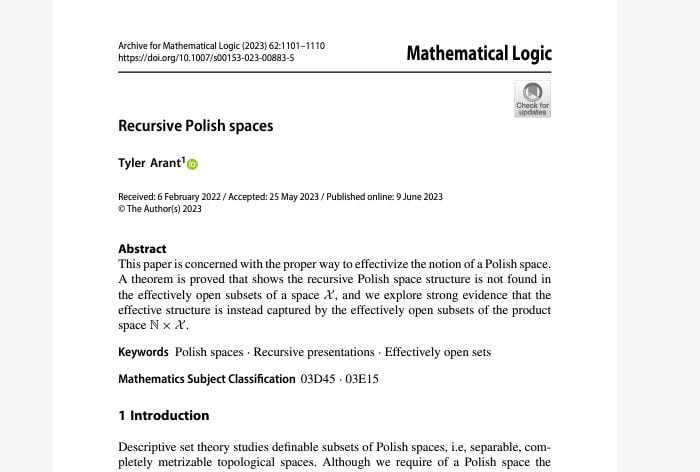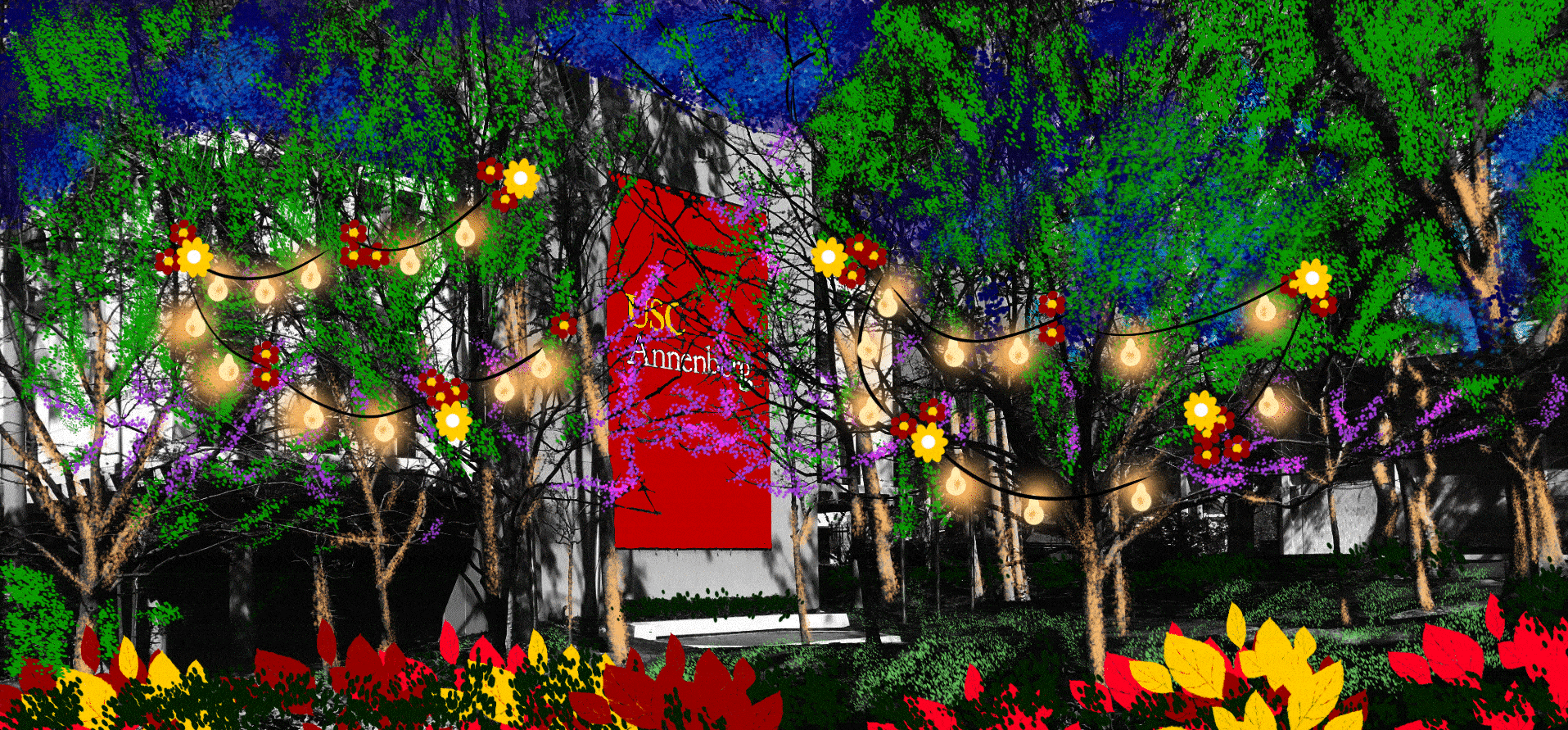General form of a reference entry for a journal article
Author, A. A., Author, B. B., & Author C. C. (DATE). Title of the article: Sentence case capitalization. Title of the Journal in Title Case Capitalization, Vol#(Iss#), pg-pg. DOI
When you’re putting together your reference entry, you will need the following information:
- Authors
- Year of publication
- Title of the article
- Title of the journal that the article is being published in
- Volume and issue number for the journal that the article was published in
- Page range (the pages in the journal that the article spans)
- DOI (digital object identifier)
Most articles by peer-reviewed academic journals will have all of these things. Some older articles might not have a DOI–no biggie. And journals that put out their issues less frequently might not have issue numbers–again, not a problem. Just use what you have.
Example
Here is the article “Recursive Polish Spaces” by my friend Dr. Tyler Arant:

If you didn’t download the .pdf and just looked at the information that the USC library search query provided, here’s what you would see:

In both cases, you can find most of the information that you’ll need to create a reference entry for this article. You’ll notice that the DOI is not on the front page of the search results. Sometimes you will have to pull up the actual article to find this information.
Here’s the information that we will need to create a reference entry:
- Author: Tyler Arant
- Year of publication: 2023
- Title of the article: Recursive Polish Spaces
- Title of the journal that the article is being published in: Archive for Mathematical Logic
- Volume and issue number for the journal that the article was published in: Volume 62, Issue 7-8
- Page range: 1101-1110
- DOI (digital object identifier): https://doi.org/10.1007/s00153-023-00883-5
If we plug that into the general template from the top of the page, we get this:
Arant, T. (2023). Recursive Polish spaces. Archive for Mathematical Logic, 62(7-8), 1101-1110. https://doi.org/10.1007/s00153-023-00883-5
Some notes:
- You’ll see that title of his article is capitalized kinda funny: Recursive Polish spaces. “Recursive” is capitalized because it is the first word of the title; “Polish” is capitalized because it is a proper noun; “spaces” isn’t capitalized. This is called sentence case capitalization–it is capitalized like a sentence. First words, proper nouns (names, places, etc.), first words after a colon–those things are capitalized. Nothing else.
- The title of the journal follows title case capitalization–it is capitalized like you would the title of a book or movie. All important words capitalized (no “a” or “the” unless it is the first word of the title).
- The only things italicized are the title of the journal and the volume number.
Citing a journal article in your paper
To cite a journal article in the text of your paper, use either a narrative citation or a parenthetical citation:
Narrative citation: “Arant (2023) has argued XXX about Polish spaces.”
Parenthetical citation: “Recursive Polish spaces are XXX (Arant, 2023).”
Narrative citations do a good job of setting up for some kind of comparison between scholars and articles (i.e. Author A says XXXX, Author B says YYYY). Parenthetical citations are good for when you want to cite a claim that an article is making without examining it further (i.e. as background information, taken for granted).
